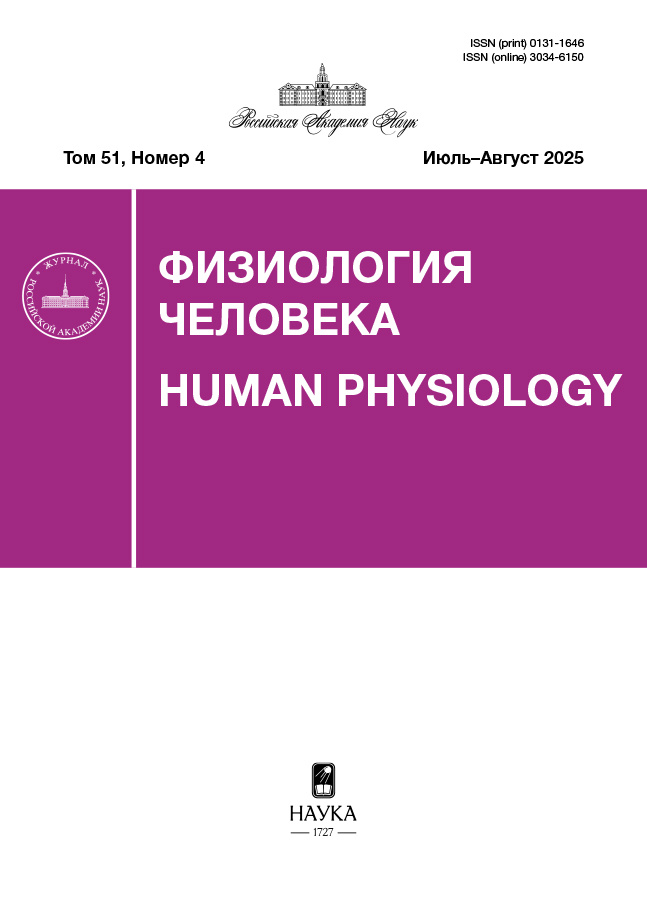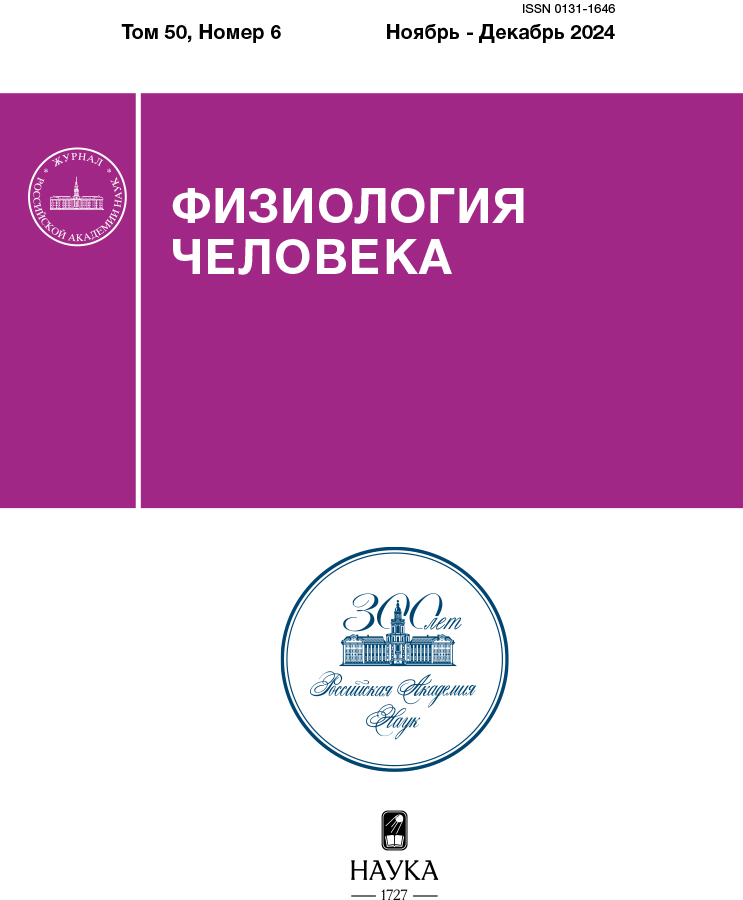Association of the Polymorphic Marker rs1614148 of the EGLN1 Gene with Aerobic Capacity of Athletes
- Authors: Dautova A.Z.1, Valeeva E.V.2, Semenova E.A.1,3, Mavliev F.A.1, Zverev A.A.1, Nazarenko A.S.1, Larin A.K.3, Generozov E.V.3, Ahmetov I.I.2,3,4
-
Affiliations:
- Volga Region State University of Physical Culture, Sport and Tourism
- Kazan State Medical University
- Lopukhin federal research and clinical center of physical-chemical medicine of federal medical biological agency
- Liverpool John Moores University
- Issue: Vol 50, No 6 (2024)
- Pages: 52-60
- Section: Articles
- URL: https://ruspoj.com/0131-1646/article/view/664090
- DOI: https://doi.org/10.31857/S0131164624060062
- EDN: https://elibrary.ru/AGCYWK
- ID: 664090
Cite item
Abstract
Recent studies have shown an association between the rs1614148 polymorphism of the Egl-9 family hypoxia-inducible factor 1 (EGLN1) gene and maximal oxygen consumption (VO2) in untrained individuals. The association of this polymorphism with aerobic performance in athletes and with haematological parameters has not been previously investigated. The aim of this study was to investigate the association of the polymorphic marker rs1614148 of the EGLN1 gene with aerobic performance and haematological parameters in athletes of different specialisations and qualifications. 1309 athletes specialised in different sports were studied (538 females 21.9 ± 4.1 years, 771 males 22.4 ± 4.8 years). At the time of the survey, 132 athletes had the qualification of Honoured Master of Sports (HMS), 331 – International Master of Sports (IMS), 444 – Master of Sports (MS), 257 – Candidate Master of Sports (CMS) and 145 – popular sports categories. The control group consisted of 284 non-athletes (44.5 ± 4.1 years). DNA was isolated from buccal epithelial cells or from venous blood leukocytes. Genotyping was performed by real-time PCR or microarray analysis. Athletes were assessed for aerobic performance using spiroergometry (n = 259) and haematological parameters were determined (n = 240). A predominance of the rs1614148*A allele was found both in highly qualified athletes and in the general group of endurance athletes (stayers) compared to speed athletes (26.3% versus 15.8%, χ2 = 3.81, OR = 1.90, p = 0.025). An association of the rs1614148 AA genotype of the EGLN1 gene with higher BMD (p = 0.047) was observed in the IMS and HMS group, which is consistent with literature data. No effect of the EGLN1 gene polymorphism on haematological parameters was found. Thus, the rs1614148*A allele predominates in the group of stayers, which may be due to its association with high aerobic capacity.
Full Text
About the authors
A. Z. Dautova
Volga Region State University of Physical Culture, Sport and Tourism
Author for correspondence.
Email: dautova.az@mail.ru
Russian Federation, Kazan
E. V. Valeeva
Kazan State Medical University
Email: dautova.az@mail.ru
Russian Federation, Kazan
E. A. Semenova
Volga Region State University of Physical Culture, Sport and Tourism; Lopukhin federal research and clinical center of physical-chemical medicine of federal medical biological agency
Email: dautova.az@mail.ru
Russian Federation, Kazan; Moscow
F. A. Mavliev
Volga Region State University of Physical Culture, Sport and Tourism
Email: dautova.az@mail.ru
Russian Federation, Kazan
A. A. Zverev
Volga Region State University of Physical Culture, Sport and Tourism
Email: dautova.az@mail.ru
Russian Federation, Kazan
A. S. Nazarenko
Volga Region State University of Physical Culture, Sport and Tourism
Email: dautova.az@mail.ru
Russian Federation, Kazan
A. K. Larin
Lopukhin federal research and clinical center of physical-chemical medicine of federal medical biological agency
Email: dautova.az@mail.ru
Russian Federation, Moscow
E. V. Generozov
Lopukhin federal research and clinical center of physical-chemical medicine of federal medical biological agency
Email: dautova.az@mail.ru
Russian Federation, Moscow
I. I. Ahmetov
Kazan State Medical University; Lopukhin federal research and clinical center of physical-chemical medicine of federal medical biological agency; Liverpool John Moores University
Email: dautova.az@mail.ru
Russian Federation, Kazan; Moscow; Liverpool, UK
References
- Dempsey J.A., Wagner P.D. Exercise-induced arterial hypoxemia // J. Appl. Physiol. 1999. V. 87. № 6. P. 1997.
- Popov D.V., Vinogradova O.L. [Aerobic performance: role of oxygen delivery and utilization, glycolytic flux] // Usp. Fiziol. Nauk. 2012. V. 43. № 1. P. 30.
- Nielsen H.B., Bredmose P.P., Stromstad M. et al. Bicarbonate attenuates arterial desaturation during maximal exercise in humans // J. Appl. Physiol. 2002. V. 93. № 2. P. 724.
- Vogiatzis I., Georgiadou O., Giannopoulou I. et al. Effects of exercise-induced arterial hypoxaemia and work rate on diaphragmatic fatigue in highly trained endurance athletes // J. Physiol. 2006. V. 572. Pt. 2. P. 539.
- Grataloup O., Busso T., Castells J. et al. Evidence of decrease in peak heart rate in acute hypoxia: Effect of exercise-induced arterial hypoxemia // Int. J. Sports. Med. 2007. V. 28. № 3. P. 181.
- Semenza G.L. Oxygen sensing, homeostasis, and disease // N. Engl. J. Med. 2011. V. 365. № 6. P. 537.
- Wang G.L., Jiang B.H., Rue E.A., Semenza G.L. Hypoxia-inducible factor 1 is a basic-helix-loophelix-PAS heterodimer regulated by cellular O2 tension // Proc. Natl. Acad. Sci. U.S.A. 1995. V. 92. № 12. P. 5510.
- Semenza G.L. The genomics and genetics of oxygen homeostasis // Annu. Rev. Genomics Hum Genet. 2020. V. 21. P. 183.
- Corrado C. Fontana S. Hypoxia and HIF signaling: One axis with divergent effects // Int. J. Mol. Sci. 2020. V. 21. № 16. P. 5611.
- Bai J., Li L., Li Y., Zhang L. Genetic and immune changes in Tibetan high-altitude populations contribute to biological adaptation to hypoxia // Environ. Health Prev. Med. 2022. V. 27. P. 39.
- Lappin T.R., Lee F.S. Update on mutations in the HIF: EPO pathway and their role in erythrocytosis // Blood Rev. 2019. V. 37. P. 100590.
- Bondareva E.A., Bleer A.N., Godina E.Z. Search for associations between G/A polymorphism of the EPAS1 gene and the maximal oxygen consumption in Russian athletes // Human Physiology. 2016. V. 42. № 3. P. 335.
- Brutsaert T.D., Kiyamu M., Elias Revollendo G. et al. Association of EGLN1 gene with high aerobic capacity of Peruvian Quechua at high altitude // Proc. Natl. Acad. Sci. U.S.A. 2019. V. 116. № 48. P. 24006.
- Liu G., Zhao W., Zhang H. et al. rs1769793 variant reduces EGLN1 expression in skeletal muscle and hippocampus and contributes to high aerobic capacity in hypoxia // Proc. Natl. Acad. Sci. U.S.A. 2020. V. 117. № 47. P. 29283.
- Semenova E.A, Hall E.C.R., Ahmetov I.I. Genes and Athletic Performance: The 2023 Update // Genes (Basel). 2023. V. 14. № 6. P. 1235.
- Sutter C.H., Laughner E., Semenza G.L. Hypoxia inducible factor 1alpha protein expression is controlled by oxygen-regulated ubiquitination that is disrupted by deletions and missense mutation // Proc. Natl. Acad. Sci. U.S.A. 2000. V. 97. № 9. P. 4748.
- Huang L.E., Gu J., Schau M., Bunn H.F. Regulation of hypoxia-inducible factor 1alpha is mediated by an O2-dependent degradation domain via the ubiquitin-proteasome pathway // Proc. Natl. Acad. Sci. U.S.A. 1998. V. 95. № 14. P. 7987.
- Strocchi S., Reggiani F., Gobbi G. et al. The multifaceted role of EGLN family prolyl hydroxylases in cancer: going beyond HIF regulation // Oncogene. 2022. V. 41. № 29. P. 3665.
- Semenova E.A, Zempo H., Miyamoto-Mikami E. et al. Genome-wide association study Identifies CDKN1A as a novel locus associated with muscle fiber composition // Cells. 2022. V. 11. № 23. P. 3910.
- Bouthelier A., Aragonés J. Role of the HIF oxygen sensing pathway in cell defense and proliferation through the control of amino acid metabolism // Biochim. Biophys. Acta Mol. Cell Res. 2020. V. 1867. № 9. P. 118733.
- Simonson T.S., Wei G., Wagner H.E. et al. Low hemoglobin concentration in Tibetan males is associated with greater high-altitude exercise capacity // J. Physiol. 2015. V. 593. № 14. P. 3207.
- Moore J.A., Hubbi M.E., Wang C. et al. Isolated erythrocytosis associated with 3 novel missense mutations in the EGLN1 gene // J. Investig. Med. High Impact Case Rep. 2020. V. 8. P. 2324709620947256.
- Yasukochi Y., Nishimura T., Ugarte J. et al. Effect of EGLN1 genetic polymorphisms on hemoglobin concentration in andean highlanders // Biomed Res. Int. 2020. V. 2020. P. 3436581.
Supplementary files












